12 Months in Arabic: Beginner’s Guide To The Islamic Months
As with any language, it is important to have a good understanding of the vocabulary, including the names of the months in Arabic. In this blog post, we will explore the Islamic and Gregorian calendar and the names of their months.
Advertisements
How To Say Month in Arabic
The word for “month” in Arabic is “شهر” and it pronounciation is shahr. The plural of “month” in Arabic is “أشهر” and pronounced as ashhur or شُهور transliterated as shuhoor.
Gregorian Months in Arabic
In Arabic, Gregorian months are called الأشهر الميلادية. The Arabic names of the Gregorian months are transliterations of the Latin names, with some modifications to fit the Arabic language’s phonetics.
The modifications include the addition of vowels, the use of Arabic letters that are similar in pronunciation to the Latin letters, and the replacement of certain letters that do not exist in the Arabic alphabet.
Here are the Arabic names of the Gregorian months:
Advertisements
| Months | Months in Arabic | Transliteration |
|---|---|---|
| January | يناير | Yanayir |
| February | فبراير | Fibrayir |
| March | مارس | Maaris |
| April | أبريل/إبريل | Abreel/ibreel |
| May | مايو | Mayu |
| June | يونيو/يونيه | Yunyu/Yunya |
| July | يوليو/يوليه | Yulyu/Yulia |
| August | أغسطس | Ugustus |
| September | سبتمبر | Sibtambir |
| October | أكتوبر | Uktubar |
| November | نوفمبر | Nufambir |
| December | ديسمبر | Disambir |
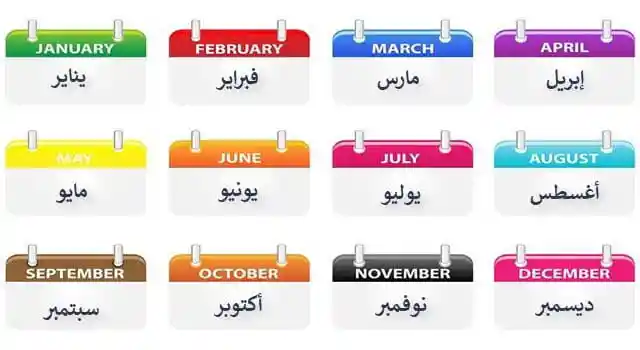
The Arabic names of the Gregorian months are widely used in the Arab world, especially in official documents and communications.
It is important to note that the pronunciation of the names may vary slightly between different dialects of the Arabic language.
January in Arabic
January in Arabic is يناير (Yanayeerr). The Arabic name is a transliteration of the Latin name with some modifications to make it easier to pronounce in Arabic.
The first letter in “يناير” is “ي” (ya), which is equivalent to the English letter “y.” The second letter is “ن” (nun), which is equivalent to the English letter “n.” The third letter is “ا” (alif), which is a vowel equivalent to the English letter “a.”
The fourth letter is “ي” (ya), which is again equivalent to the English letter “y.” Finally, the last letter is “ر” (ra), which is equivalent to the English letter “r.”
Advertisements
The name “يناير” (Yanayeerr) is used in Arabic-speaking countries, including the Arab world and some parts of Africa, to refer to the month of January.
February in Arabic
February in Arabic is “فبراير” (Febraayer). The Arabic name is a transliteration of the Latin name with some modifications to make it easier to pronounce in Arabic.
March in Arabic
March in Arabic is “مارس” (Maaris). The Arabic name is a transliteration of the Latin name with some modifications to make it easier to pronounce in Arabic.
Advertisements
April in Arabic
April in Arabic is “أبريل” (Abril). The Arabic name has been modified to fit the Arabic language phonology and script, with the addition of the glottal stop consonant represented by the letter “ء” (hamza) and the substitution of the French “v” with the Arabic letter “ب” (ba).
The name “أبريل” (Abril) is used in Arabic-speaking countries, including the Arab world and some parts of Africa, to refer to the month of April.
May in Arabic
May in Arabic is “مايو” (Mayu). The Arabic name has been modified to fit the Arabic language phonology and script, with the substitution of the English “y” with the Arabic letter “و” (waw).
June in Arabic
June in Arabic is “يونيو” (Yunyu). The Arabic name for June is borrowed from the English name “June”.
The Arabic name has been modified to fit the Arabic language phonology and script, with the substitution of the English “j” sound with the Arabic letter “ي” (ya).
July in Arabic
July in Arabic is “يوليو” (Yulyu). The Arabic name has been modified to fit the Arabic language phonology and script, with the substitution of the French “j” sound with the Arabic letter “ي” (ya).
August in Arabic
August in Arabic is “أغسطس” (Ughustus). The Arabic name has been modified to fit the Arabic language phonology and script.
The first letter in “أغسطس” is “أ” (alef hamza), which is a glottal stop sound.
The second letter is “غ” (ghain), which is a guttural sound that is unique to Arabic. The third letter is “س” (seen), which is equivalent to the English letter “s.”
The fourth letter is “ط” (taa), which is a dental sound made by placing the tongue against the back of the teeth. The fifth letter is “س” (seen), which is equivalent to the English letter “s.”
September in Arabic
September in Arabic is “سبتمبر” (Sibtimbir). The Arabic name for September is borrowed from the Latin name “septem”, which means “seven” in Latin.
It was originally the seventh month in the ancient Roman calendar before January and February were added later.
The Arabic name has been modified to fit the Arabic language phonology and script.
October in Arabic
October in Arabic is “أكتوبر” (Oktubir). The Arabic name for October is borrowed from the Latin name “octo”, which means “eight” in Latin.
It was originally the eighth month in the ancient Roman calendar before January and February were added later. The Arabic name has been modified to fit the Arabic language phonology and script.
November in Arabic
November in Arabic is “نوفمبر” (Nufimbir). The Arabic name for November is borrowed from the Latin name “novem”, which means “nine” in Latin.
It was originally the ninth month in the ancient Roman calendar before January and February were added later. The Arabic name has been modified to fit the Arabic language phonology and script.
December in Arabic
December in Arabic is “ديسمبر” (Disambir). The Arabic name for December is borrowed from the Latin name “decem”, which means “ten” in Latin.
It was originally the tenth month in the ancient Roman calendar before January and February were added later. The Arabic name has been modified to fit the Arabic language phonology and script.
Islamic Months Names In Arabic
The Hijri calendar is used in Islamic religious observances, such as the month of Ramadan, which is the month of fasting.
The Hijri calendar is the calendar used in the Arabic-speaking world. It is a lunar calendar, consisting of 12 months, with each month beginning with the sighting of the new moon.
The Hijri calendar is different from the Gregorian calendar, which is a solar calendar that consists of 12 months of varying lengths.
Arabic Months in Order
The names of the months in Arabic were derived from the Arabic language, and each has a special meaning.
Here are the Islamic months names in Arabic with their corresponding transliteration and meanings:
Note: The Islamic calendar follows a lunar cycle, and the number of days in each month can vary between 29 and 30 depending on the sighting of the moon.
Here’s a brief explanation of each of the Islamic months:
| Arabic | Pronunciation |
| مُحَرَّمُ | Muharram |
| صَفَرُ | Safar |
| رَبِيْعُ الْأَوَّلِ | Rabi’ al-Awwal |
| رَبِيْعُ الثَّانِي | Rabi’ al-Thani |
| جُمَادَى الْأُوْلَىٰ | Jumada al-Ula |
| جُمَادَى الْآخِرَةُ | Jumada al-Akhirah |
| رَجَبُ | Rajab |
| شَعْبَانُ | Sha’ban |
| رَمَضَانُ | Ramadan |
| شَوَّالُ | Shawwal |
| ذُو الْقَعْدَةِ | Dhu al-Qadah |
| ذُو الْحِجَّةِ | Dhu al-Hijjah |
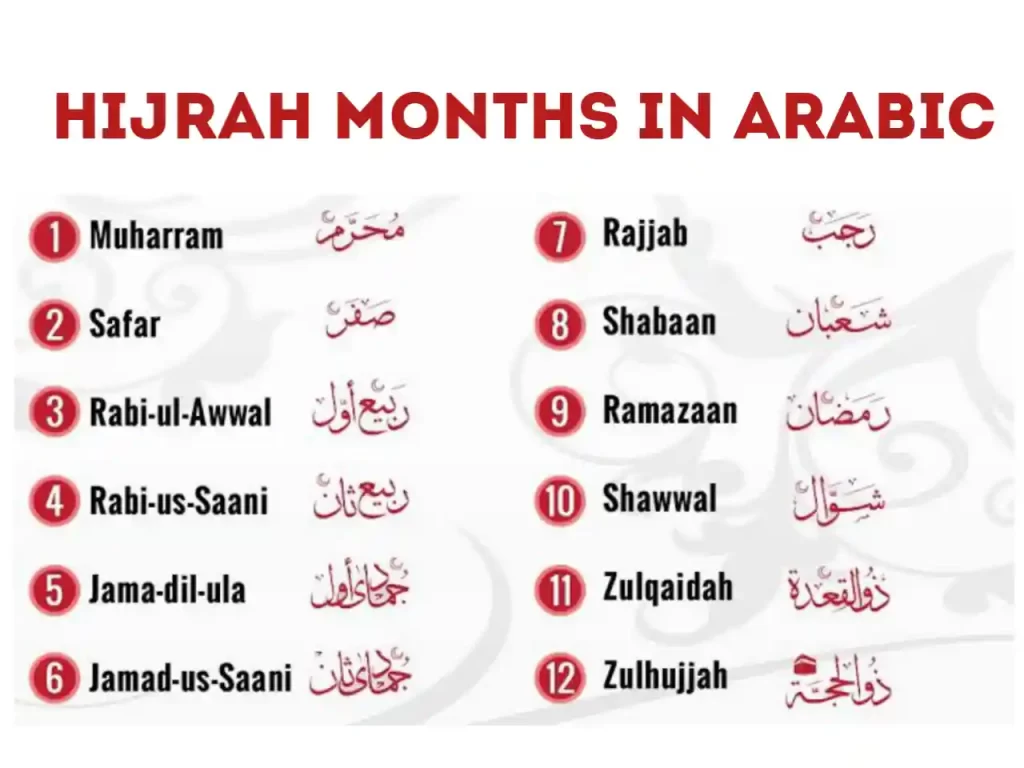
Muharram Meaning In English
Muharram means forbidden. It is the first month of the Islamic calendar, and it is considered a sacred month.
It’s called because battle and all kinds of fighting are forbidden (haram) during this month. Muharram includes ‘Ashura’, the tenth day.
Safar Meaning In English
Safar means void. Supposedly given this name because pre-Islamic Arab homes were deserted during this time of year as their residents went in search of food.
According to a different account, they used to leave nothing behind when they defeated their enemies in battle and looted their homes.
Rabi’ al-Awwal Meaning in English
Rabi’ al-Awwal means the first spring. It also means to graze, because cattle were grazed during this month.
This month marks the birth of Prophet Muhammad, although is bida’ (innovation) to celebrate the birth of Prophet Muhammad SAW, some Muslim considered a joyous occasion.
Muslims around the world celebrate his birth and life, and it is also a time for reflecting on his teachings and example.
Rabi’ al-Thani Meaning in English
Rabi’ al-Thani means the second spring. This month has no significant religious events or observances.
Jumada al-Ula Meaning
Jumada al-Ula means the first of parched land. It is often considered the pre-Islamic summer.
Jumada may also be related to a verb meaning “to freeze” and another account relates that water would freeze during this time of year.
This month’s name refers to the unstable, shifting nature of the weather during this time of year.
Jumada al-Akhirah Meaning
Jumada al-Akhirah means the last of parched land. Like Jumada al-Ula, this month is named for the unstable weather during this time of year.
Rajab Meaning
Rajab means respect or honour. This month is considered one of the holiest months in the Islamic calendar.
Rajab may also be related to a verb meaning “to remove”, so called because pre-Islamic Arabs would remove the heads of their spears and refrain from fighting.
Sha’ban Meaning
Sha’aban literally means scattered. This month is often a time of preparation for Ramadan, the month of fasting.
Marked the time of year when Arab tribes dispersed to find water. Sha‘ban may also be related to a verb meaning “to be in between two things”.
Another account relates that it was called thus because the month lies between Rajab and Ramadan.
Ramadan Meaning
Ramadan literally means burning heat. This is the month of fasting, in which Muslims abstain from food and drink from dawn until sunset. It is a time for spiritual reflection, increased prayer, and charitable giving.
Burning is related to fasting as in empty stomach one’s worldly desire will burn. Supposedly so called because of high temperatures caused by the excessive heat of the sun. Ramadan is the most venerated month of the Hijri calendar.
Shawwal Meaning
Shawwal literally means raised. This month marks the end of Ramadan and the Eid al-Fitr holiday, which is a time for celebration and feasting with family and friends.
Dhu al-Qadah Meaning
Dhu al-Qadah literally means the one of truce/sitting. This is a holy month during which war is banned. People are allowed to defend themselves if attacked.
This month is considered a time of preparation for the pilgrimage to Mecca, which takes place during the following month.
Dhu al-Hijjah Meaning
Dhu al-Hijjah means the one of pilgrimage. This is the month of the Hajj pilgrimage, which is one of the five pillars of Islam.
Muslims from around the world travel to Mecca to perform the Hajj, and it is also a time for celebrating the Eid al-Adha holiday.
The Hajj is performed on the eighth, ninth and the tenth of this month. Day of Arafah takes place on the ninth of the month.
Eid al-Adha, the “Festival of the Sacrifice”, begins on the tenth day and ends on sunset of the twelfth, and during which war is banned.
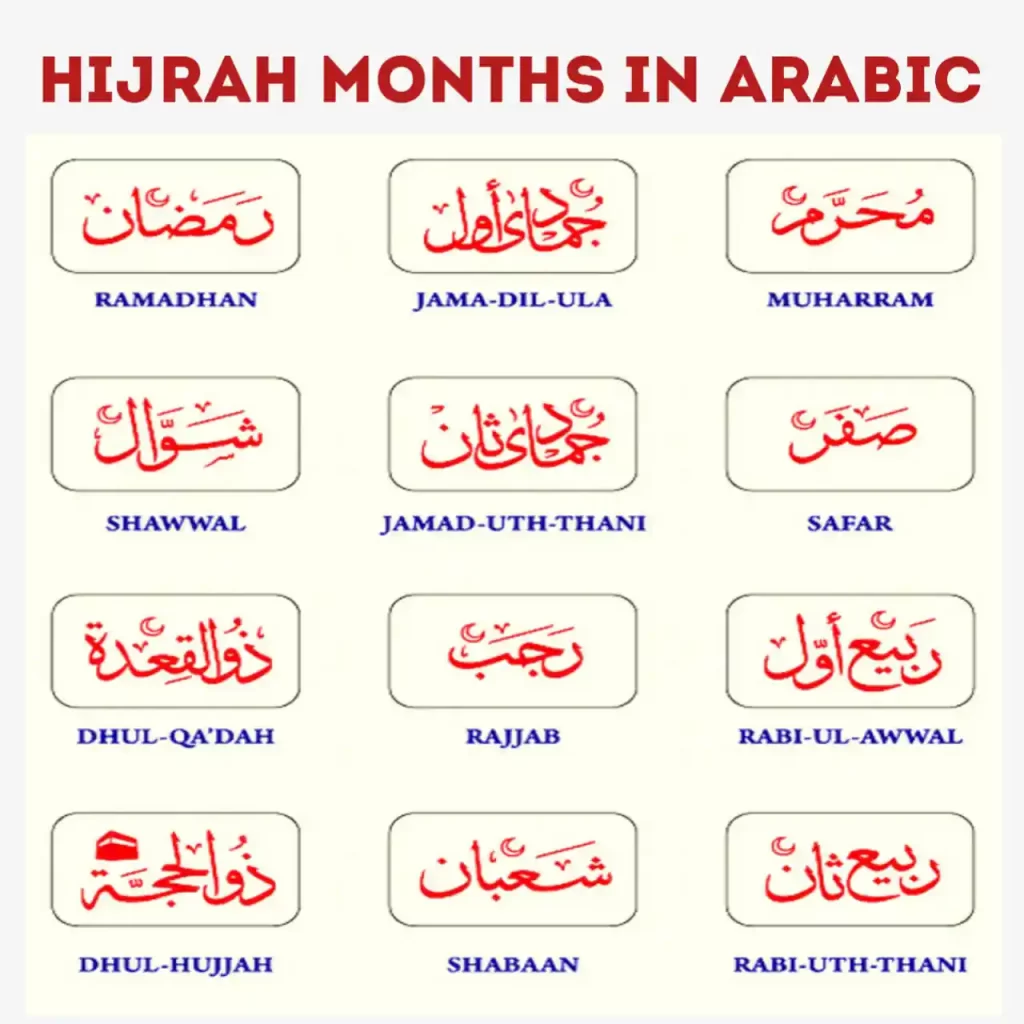
Conclusion
Learning the names of the months in Arabic is an essential part of understanding the Arabic language and culture.
By understanding the meanings of the Arabic months, one can gain insight into the Islamic calendar, appreciate Arabic literature and poetry, and communicate more effectively with Arabic speakers.
Whether for personal or professional reasons, learning the Arabic months is a worthwhile endeavor that can enrich one’s knowledge and understanding of this fascinating language and culture.
Advertisements

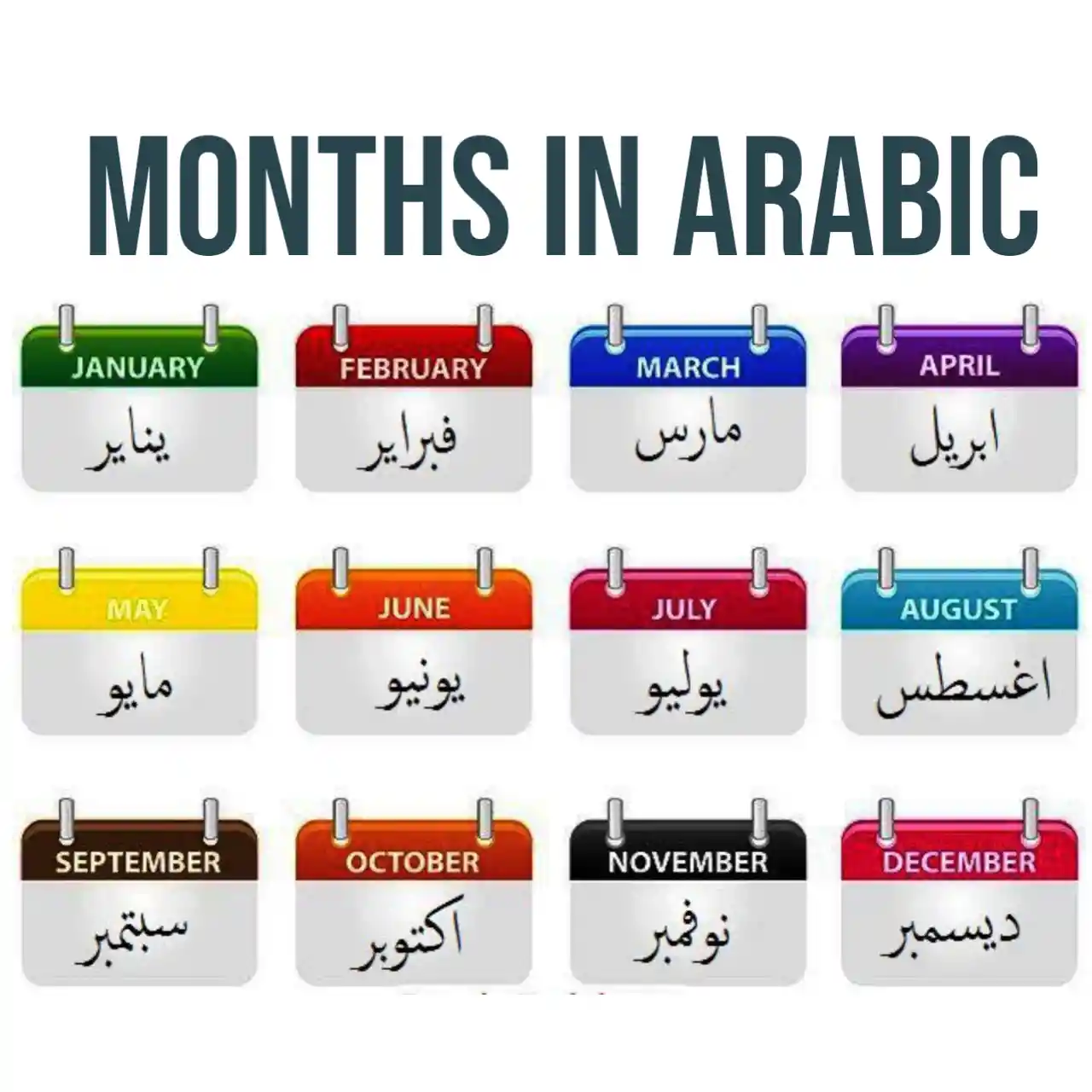
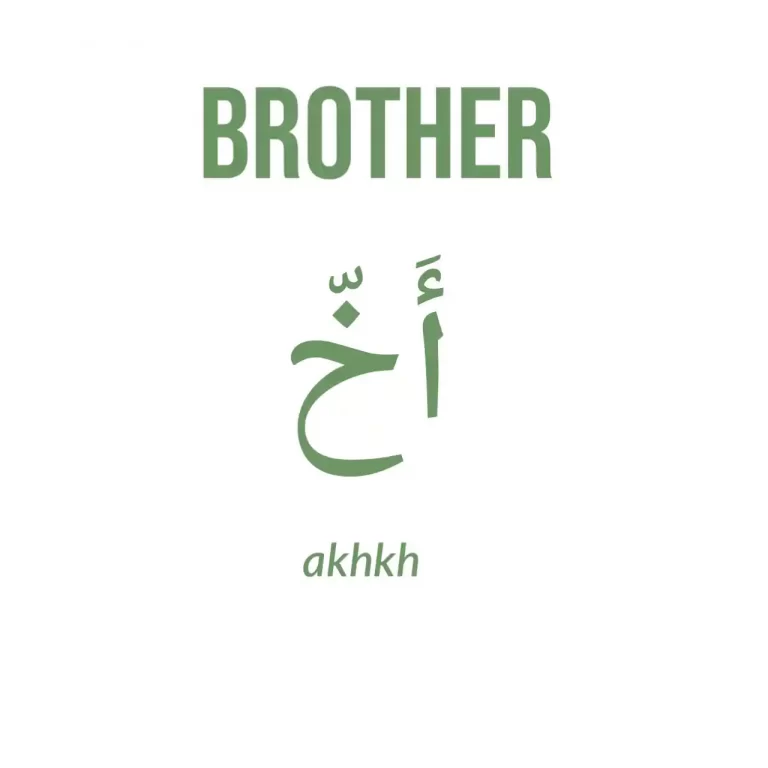
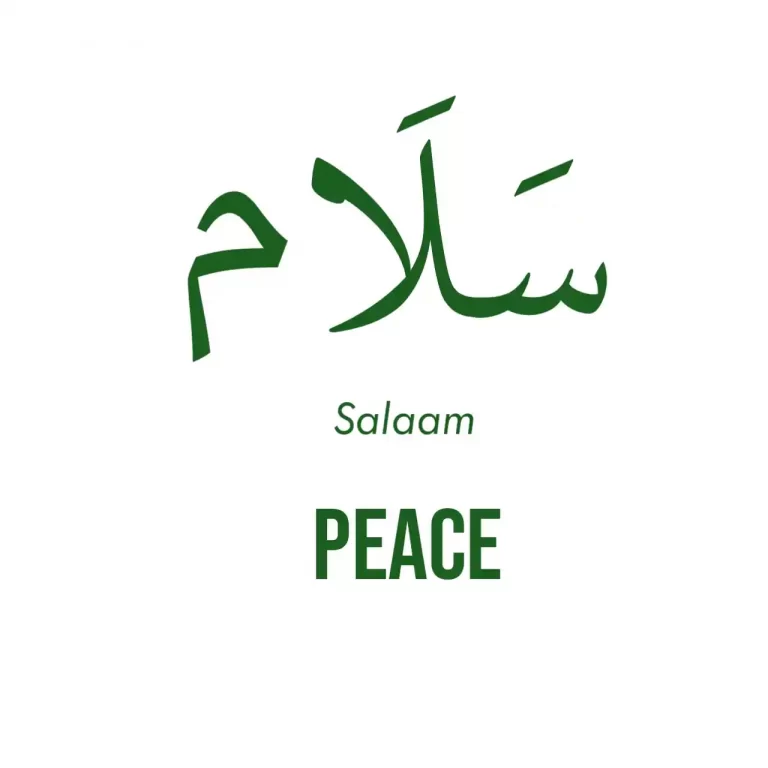
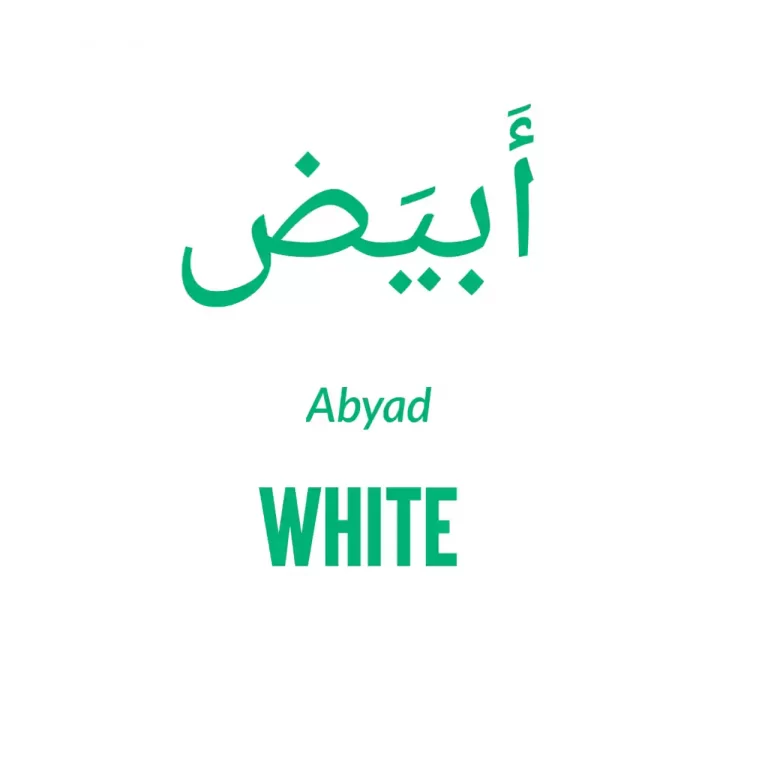

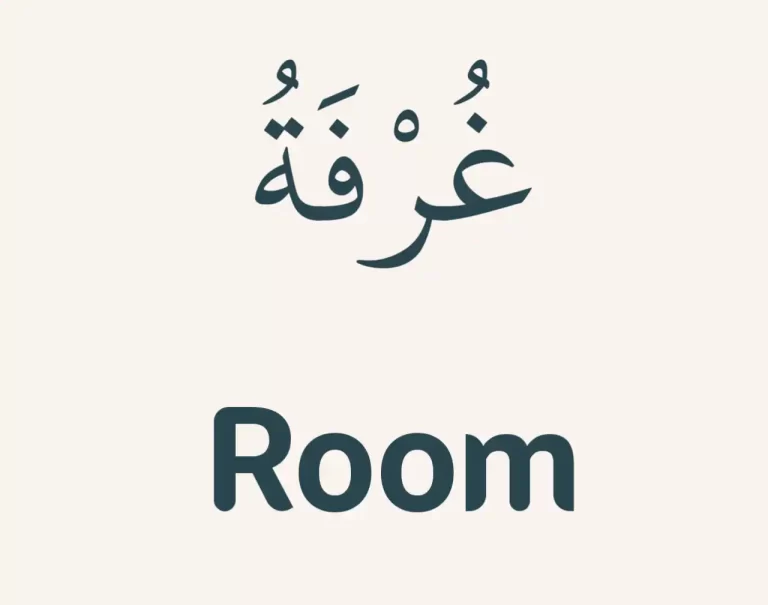

2 Comments